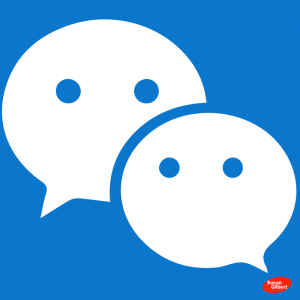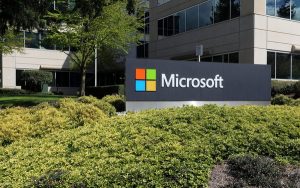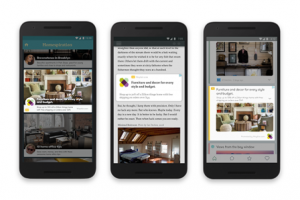
Instead of fearing the machines, let’s use them to build a digital HR ecosystem that empowers people through technology.
At the close of 2014, we began focusing on the trends that would shape the staffing industry in 2015 and beyond, particularly as firms of all sizes began investing in performance management software to draw from the wellspring of Big Data. HR technology today is no longer a luxury or a simple way to automate processes for operational or cost efficiencies — it’s essential to our future success. To push ahead and thrive, we must redefine staffing as a digitally fueled people business that’s enhanced and empowered by technology. Those who embrace the idea will forge new opportunities as pioneers across a digital frontier. Those who don’t may find themselves left in the dust. The good news is that it’s easier than ever to embark on this exciting journey.
Pioneers on the Digital Frontier
We talk a lot about the economic changes spurred by the advent of the sharing economy. However, a more seismic shift is taking place with the digital economy. Digital no longer represents a slick new toy or lifehack. It’s interwoven into every aspect of our professional and personal lives. The world of staffing is no different.
We’ve moved past historical reporting toward predictive data. Talent analytics now drive sourcing and vetting processes. Algorithms in candidate ranking systems can figure out how quickly talent have progressed in their careers and determine whether an individual is a laggard or a climber. Intelligent machines sharpen business decisions, shed greater insight into the workforce, forecast future demands, quickly match talent to ideal business cultures, and measure attributes that are critical to an organization’s growth.
In the 1990s, the first vendor management systems emerged. And with them came MSPs. These trendsetting firms positioned themselves on the cusp of a technology revolution while a hesitant and skeptical majority stood by. Yet in time, nearly every staffing company came to adopt this new way of doing business. We’re standing on that precipice once again.
TheImpact of Disruptive Technologies on Staffing
In a recent study, Russell Reynolds Associates surveyed over 2,000 executives about the impact and enablers of digital technologies across industries. The spaces most likely to experience a digital disruption were media, telecom, consumer financial services, retail and insurance. For media-centric businesses, the results come as no surprise. Netflix broke this ground a while ago, and major studios are now embracing the power of algorithms.
Prior to Netflix’s success in digital content streaming, television studios relied on limited data to guide their programming decisions: the intuition of a rather narrow and homogeneous pool of executives, gross sales figures and Nielsen ratings, which also lacked diversity. The results weren’t always stellar or even close to hitting the mark.
Then came Ted Sarandos, Netflix’s chief content officer. The company invested heavily in data-driven programming, creating advanced algorithms that could more accurately predict the desires and behaviors of viewers. The success of Netflix’s original programming attests to the value of its data systems.
In Hollywood, the same concept has now taken hold. Consider a startup called ScriptBook, which is gaining traction with its promise of “hard science for a better box office.” The algorithms in the software attempt to predict the boom or bust of a film before shooting even begins: “Script-based predictive decision support system providing film studios, investors and distributors with early analysis and box office forecasts based on film scripts.”
This digital evolution isn’t restricted to media, retail or consumer finance. The fascinating find in the Russell Reynolds report pops up in the center of the list. At 51 percent, professional services like HR and staffing ranked as industry segments that would experience moderate to massive disruptions from digital technologies. As with other industries, the flow of digitized information in the human resources space is increasing exponentially through the presence of wearable sensors, cloud-based systems, social media and mobile platforms. The artificial intelligence in HR systems runs faster and smarter now, detecting patterns, identifying key candidate traits beyond skills, weeding out biases and delivering predictions that solve complex hiring challenges. Our willingness to adapt traditional processes to digital ones will be instrumental.
Transforming Staffing Processes to Digital HR Ecosystems
Think Globally, Act Locally
The first step in becoming a digital organization is to rethink the existing business model — conceiving a strategy for the entire ecosystem, not just the organization. There are many “customers” active in the talent business. They include internal customers (such as stakeholders), external customers (such as candidates) and direct clients (those people purchasing your solutions). And each of these groups represents an end user.
Your new platform should focus on the universal user experience. Deploy or design a system that facilitates the seamless exchange of data across the global user population — everyone who will be accessing the platform. That could include candidates who apply through your portal, hiring managers who post job orders, MSP teams that run metric reports, internal executives who study performance, and more. A robust platform, no matter how simple or complex, unites everyone in the same ecosystem.
Foster a Digital Culture
As Rhys Grossman writes in his recent Harvard Business Review article: “Decisions that had previously been deferred to those with years of experience and ‘a feel for what the customer wants’ are now being challenged with data. And whoever has the data has the power to make strategic decisions. Organizations that foster a culture of making data-based decisions will be in a stronger position to weather the changes ahead.”
Bringing in digitally savvy disrupters, whether internal or external to the organization, can pave the way. These individuals help traditionally grounded enterprises “overcome organizational inertia and drive enterprise-wide digital transformation and innovation.” Not only will this ease the company into its new digital iteration, it will create a tech-friendly employment brand that attracts in-demand millennial talent.
Create teams of teams
In place of top-down leadership and hierarchies, move toward a networked approach. Thought-leading enterprises are transforming departments into project teams. This approach empowers talent to exercise greater degrees of initiative, align with internal and external customer needs, and assume more accountability for their performance. When teams are fluid and integrated with a larger network of other teams, instead of operating in silos, the emphasis on control shifts to the benefits of speed and collaboration. You end up with a chaos-tolerant, agile process that allows for real-time adjustments, on-demand information, fewer bureaucratic roadblocks and greater attention paid to the user experience.
Communicate
Any catalyst to major change — even when advantageous — can seem cataclysmic to executives or board members who are accustomed to tradition. A smooth transition requires support and buy-in from senior leaders. By creating an army of advocates and ambassadors for change, the transformation becomes more comfortable. Still, there’s nothing more unnerving than the unknown. Be sure to communicate progress, obstacles and achievements regularly until the business case is apparent and persuasive.
Couple Digital Expertise with Domain Expertise
In any organization, there will be individuals with domain expertise (deep knowledge of the skills and processes needed to deliver your offering) and those with digital expertise (data scientists, analysts, IT professionals). Generally speaking, it would be unwise to presume that each group understands the inner workings of the other. Yet, they must intersect. A data analyst probably isn’t familiar with the nuances of HR: labor relations, employment law, recruiting techniques, performance monitoring, sourcing strategies, compliance and so forth. And HR may understand only enough about data curation to be dangerous. Yet, both groups need one another to succeed.
As your digital transformation takes shape, give digital and domain experts a forum where they can meet regularly, work through the details of the platform, learn about roles and processes, and harmonize to ensure the best experience for every user in the ecosystem.
A Digital HR Ecosystem Can Enhance the Human Experience
Although technology may reign as king in the modern economy, the wheels of commerce can’t turn without savvy professionals to design, implement, administer and maintain the machine. The strongest recruiters are taking advantage of the intelligent talent acquisition technologies present in new recruitment software. Through the data available, they can optimize their efforts. However, the most innovative automation can’t engage and inspire top talent.
Talent analytics do a lot of heavy lifting. However, without proper interpretation, curation and a human decision-making element, all that information runs the risk of becoming marginalized or indeterminate. This generation of talent values transparency, relationship building, teamwork, mentoring, communication and culture. Technology will always remain a tool. And human resources will always require a human touch. Yet by strengthening the abilities of your teams with digital support — and making technology an integral element of your processes — you can build a flourishing ecosystem that combines the best of both worlds.
Business & Finance Articles on Business 2 Community(111)






